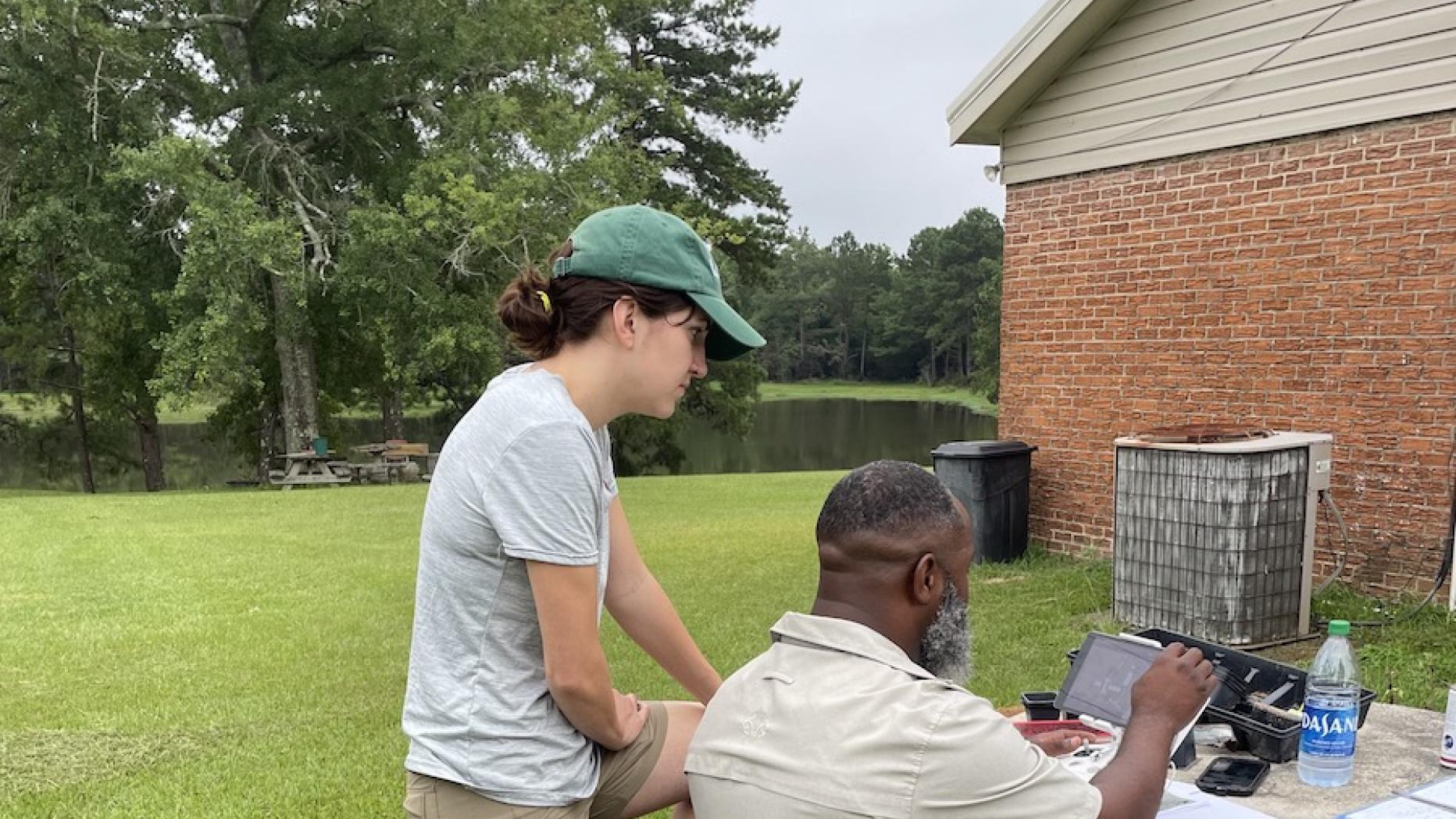Elizabeth Donison | Center for the Preservation of Civil Rights Sites

Navigating a drone with Freddie Davis, the executive director of the Rural Training and Research Center (Photo Credit: Sarah Lerner).
Stuart Weitzman School of Design
102 Meyerson Hall
210 South 34th Street
Philadelphia, PA 19104

Navigating a drone with Freddie Davis, the executive director of the Rural Training and Research Center (Photo Credit: Sarah Lerner).
I interned with the Center for the Preservation of Civil Rights Sites this summer on a National Register of Historic Places nomination for the Federation of Southern Cooperatives’ Rural Training and Research Center. Most of the summer was spent in Philadelphia working remotely or in the Historic Preservation Studios, but I spent a week in rural Alabama documenting the site. This site recently turned 50 years old in 2021, so it is among very few civil rights sites from the 1970’s to be nominated as a National Register historic district. It’s been an invaluable experience nominating this important example of an African American grassroots organization that directly works to support farmers, combat rural poverty, and promote economic self-sufficiency in the rural South. As a non-profit organization, the Training Center’s funding mostly comes from the USDA and other farming or agroforestry grants, so their buildings have not received the attention they deserve. With designation, the staff plans to apply for federal and state grants that prefer listed National Historic places. CPCRS and its partner, Tuskegee University, take on projects like this in Pennsylvania and Alabama based on the State Historic Preservation Offices recommendations.
Luckily for me, this project encompassed my interests in social justice, “public preservation”, and farming communities. My responsibility this summer was to act as the lead researcher for the nomination, with help from CPCRS’ Sarah Lerner (HSPV’20) and the Alabama SHPO. I familiarized myself with the Department of the Interior’s standards for a rural historic district nomination, conducted background research, and prepared paperwork and maps for our field visit. When Sarah and I arrived at the Training Center in Sumter County, we photographed and documented the buildings and landscape, conducted interviews with founders and members, and visited the County courthouse for deed and probate inventory research. Because this is a large site (~70-acres), I had to document the landscape’s minute details, right down to tree species and the presence of hay bales. After the site visit, I spent my time writing and post-processing the data.
There was a learning curve to understand the nomination process and how to read the landscape within the NPS’ standards, so I relied on my past experiences as an archaeologist and my first-year courses. I used the technical skills and knowledge from most of my courses, including Cultural Landscapes (HSPV538), Historic Preservation Law (HSPV671), American Architecture (HSPV521), Documentation (HSPV600 & 601), Digital Media (HSPV624), and Public History (HSPV 534). They helped me with all aspects of the nomination - research, photography, interview skills, building descriptions, map-making- they were critical for me, especially as I took on this project solo.
This internship exposed me to many new experiences, including the ability to work closely with the Federation of Southern Cooperatives and its founding members, many of whom were actively involved in the Civil Rights Movement. Writing the nomination itself and working with the Alabama SHPO was an invaluable experience for my future professional career. Not only did I gain technical expertise, I got to experience the preservation challenges in the Southeast while visiting Montgomery, Birmingham, and rural localities. I am grateful that I was given the trust from both the Federation and CPCRS to handle such an important site, as well as the opportunity to be treated as a professional in the field.